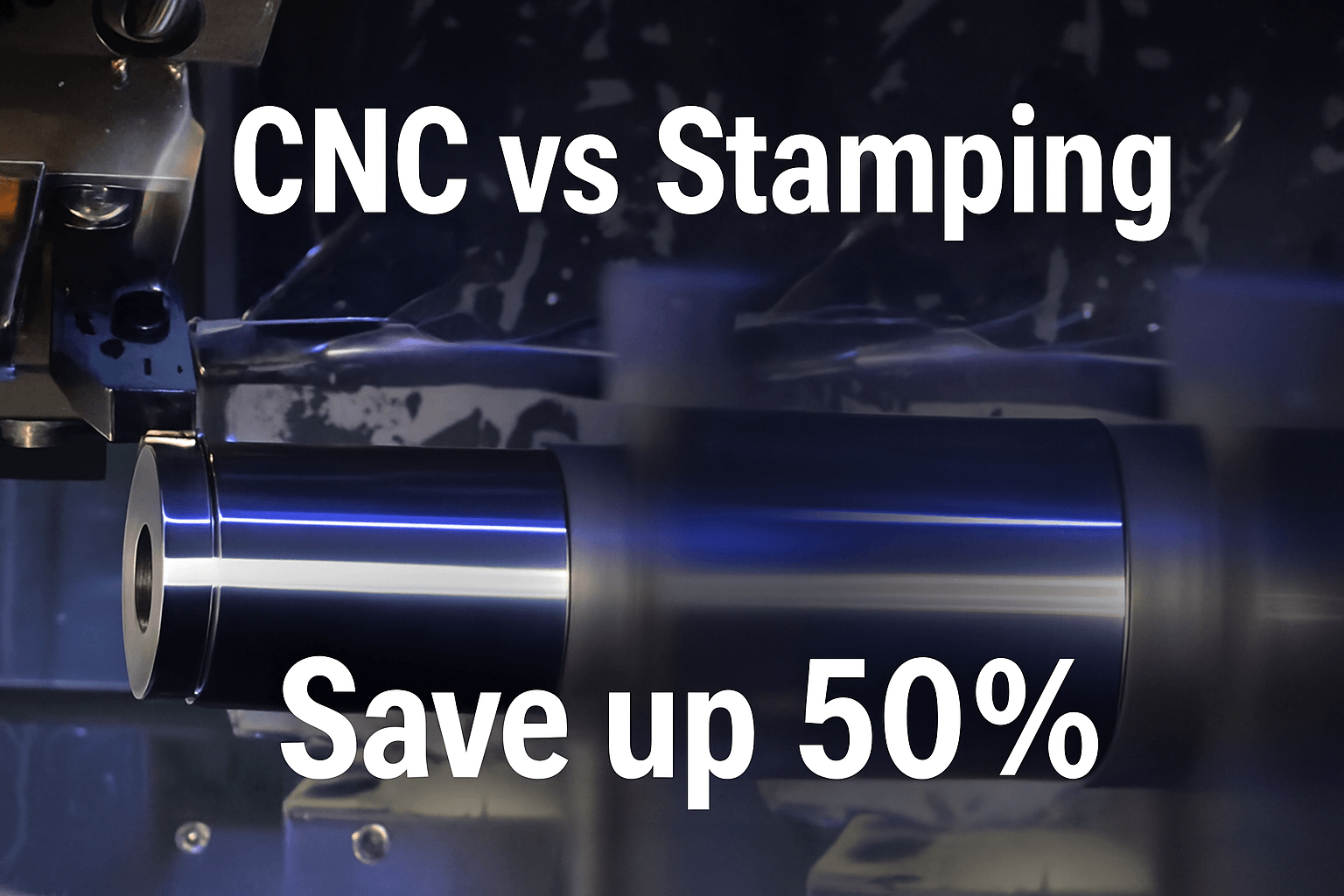Choosing between sheet metal stamping and CNC machining can save or waste tens of thousands of dollars. This blog explains cost curves, tolerances, lead times, and a real bathroom hardware case to help buyers make smarter decisions.
Most buyers and engineers face the same crossroads at some point: *Do we make this part with sheet metal stamping or CNC machining?* Choose too early (or stick with the wrong process too long) and you can burn tens of thousands of dollars in tooling or unit cost—plus weeks of schedule. This article distills the practical differences, the true cost curve, and a bathroom-hardware case that shows where each process shines—so you can make the call with confidence.
What really drives the decision
If you strip away the buzzwords, your choice comes down to five factors:
- Volume: how many parts over what timeframe
- Tolerance: how tight the dimensions must be
- Complexity: geometry, features, and secondary ops
- Lead time: how fast you need first articles and ramp
- Lifecycle: how often the design will change
Stamping and CNC can both produce excellent metal parts; the “right” process is the one that matches these realities—not a theoretical best.
[Image suggestion: Infographic showing stamping = high upfront + low unit cost vs CNC = no upfront + higher unit cost.]
The true cost curve (in plain English)
- Stamping: Tooling US$6,000–$15,000. After amortization, US$0.80–$2.00 per part at high volume.
- CNC machining: No tooling cost. Unit price typically US$8–$25 for small batches (50–500 pcs).
[Image suggestion: Line chart showing cost per part vs volume, stamping curve dropping, CNC staying flat.]
Tolerances and geometry
CNC: ±0.002 in (0.05 mm) typical. Ideal for precision features and complex 3D geometry.
Stamping: ±0.005–0.010 in typical. Tighter tolerance possible with secondary ops.
Rule of thumb: flat, repetitive parts → stamping; intricate 3D parts → CNC.
[Image suggestion: Table comparing tolerances side by side.]
Lead time and flexibility
CNC: parts in days to 2 weeks. Best for prototypes and fast-moving designs.
Stamping: tooling requires 4–8 weeks (sometimes 6–12 weeks). Best for stable, high-volume designs.
[Image suggestion: Timeline graphic comparing CNC vs stamping lead time.]
Case: Stainless Steel Drain Covers (Bathroom Hardware)
Scenario A – 5,000 pcs:
- Stamping: Tooling US$6,000–$15,000. Unit price US$0.8–$2. → More than 50% cheaper overall.
- CNC: No tooling cost. Unit price US$8–$25. Much higher overall cost.
Scenario B – 300 pcs:
- Stamping: Tooling still required, not cost-effective.
- CNC: US$8–$25 per part, no tooling risk, faster delivery.
Conclusion: Stamping wins at high volume. CNC is smarter for prototypes or small runs.
[Image suggestion: Side-by-side cost comparison table for 300 pcs vs 5000 pcs.]
Practical ways to avoid overpaying
1. Lock decisions to actual volume, not forecasts.
2. Tie tolerance to function—not habit.
3. Simplify geometry early.
4. Align lead time with business risk.
5. Think lifecycle: prototype → pilot → scale.
[Image suggestion: Flow chart prototype → pilot → scale.]
Quick buyer’s checklist
- Annual and lot volume.
- Critical tolerances.
- Feature set.
- Lead-time constraints.
- Revision cadence.
- Finish and material (304 vs 316 stainless, brushed vs mirror).
[Image suggestion: Checklist graphic for buyers to print/use.]
FAQ (Common buyer questions)
Q: How tight can stamping tolerances really go?
A: ±0.005–0.010 in is typical. Tighter possible with secondary ops.
Q: How much does a progressive die cost?
A: Ranges from US$10,000 to over US$200,000 depending on complexity.
Q: Can CNC hit urgent lead times?
A: Yes, simple parts can be machined in days to 2 weeks.
Q: Is switching from CNC to stamping difficult?
A: It requires some DFM changes but is a common, cost-saving transition.
Buyer’s Key Takeaways
1. Volume decides cost efficiency: CNC wins small runs, stamping wins scale.
2. Match tolerance to function: CNC for precision, stamping for covers and brackets.
3. Lead time = risk management: CNC for speed, stamping for stable volume.
4. Smart buyers transition: Prototype with CNC, scale with stamping.
Final thoughts
Choosing between sheet metal stamping and CNC machining is not about which process is universally better—it’s about aligning the process with your product lifecycle. Smart buyers prototype with CNC, validate demand, then transition to stamping once volumes justify tooling. Thanks to China’s mature supply chain, tooling costs and lead times are often more competitive than overseas suppliers. If you have specific drawings, feel free to reach out for a tailored cost analysis and quotation.

